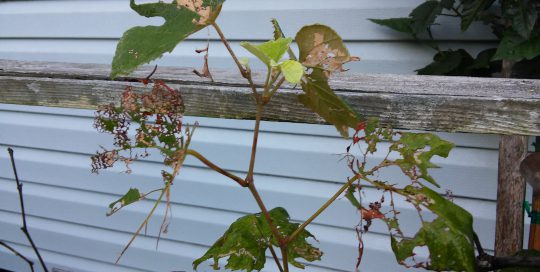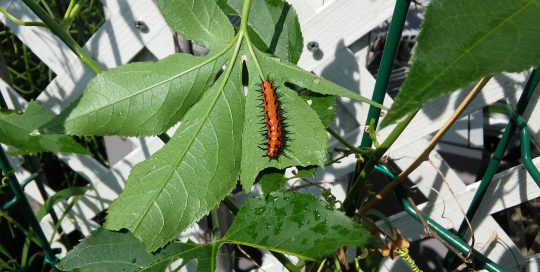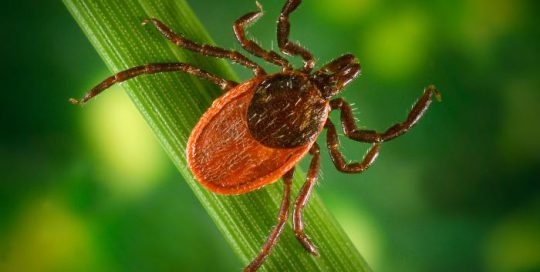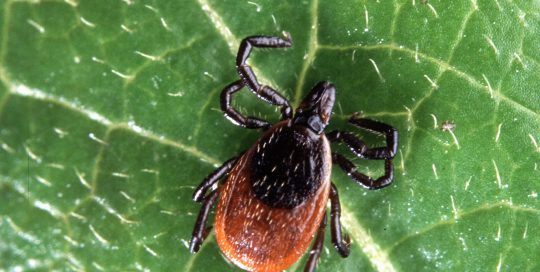As an avid gardener, this is what to know about ticks and Lyme disease. Living in the Chicago suburbs, I encounter many insects, both beneficial and harmful. Ticks fall into the harmful, bad bugs category. Unlike shiny Japanese beetles that chew my hibiscus flowers until they look like lace doilies, ticks are much smaller, but they are capable of harming pets and humans. I discovered that the hard way last summer when I contracted Lyme disease after a tick—the size of a poppy seed—bit me in our garden! Header photo (c) stock.adobe.com
What to Know About Ticks and Lyme Disease: So, What Is Lyme Disease?
Lyme disease is one of several serious illnesses spread by ticks—small, blood-sucking parasites. The Lyme disease bacterium, Borrelia burgdorferi, is transmitted through the bite of infected blacklegged ticks, also called deer ticks. (These ticks spread the disease in the northeast, mid-Atlantic, and north-central United States. The western blacklegged tick spreads the disease on the Pacific Coast.)
It’s mind-boggling that something so tiny can cause so much distress. Symptoms can include fever, rash, headache, muscle and joint pain, facial palsy (where one or both sides of the face droop), arthritis, heart problems and worse. A rash occurs in about 70 to 80 percent of people who are bit. The rash often looks like a bull’s-eye inside a large red area. But, not everyone who is bit develops a rash.
Lyme disease was first recognized about 1975 near Lyme, Connecticut, and spread across New England and the upper Midwest. It is now making its way big time across northeastern Illinois. Despite that, local health-care providers are still not showing alarm. That’s partly because Lyme disease symptoms are similar to other illnesses.
Reported cases of Lyme disease have more than tripled since 1995 and the Centers for Disease Control and Prevention (CDC) now estimate that more than 300,000 Americans become ill each year. Anyone who spends time outdoors in tick-infested areas—gardeners, hikers, campers, landscapers, utility workers—is at risk.
Lyme Disease Treatment
When a person contracts Lyme disease, the body produces antibodies in response to the infection. To diagnose the disease, a blood test is used to detect theantibodies. People treated with appropriate antibiotics in the early stages of the disease typically recover completely, but it can take six months or more to feel good again. If you suspect you have Lyme disease, see your doctor.
If left untreated, the infection can spread to joints, the heart and the nervous system. This can result in heart palpitations or an irregular heart beat (Lyme carditis). Lyme disease may also cause dizziness or shortness of breath. Other symptoms include shooting pains, numbness, or tingling in the hands or feet.









